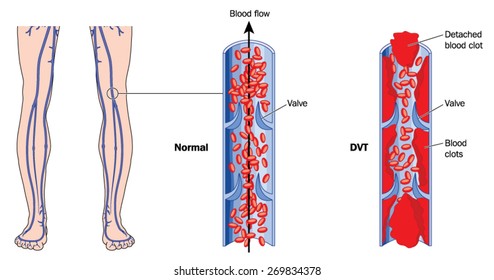What is Deep Vein Thrombosis?
Deep Vein Thrombosis (hereby referred to as DVT) is a condition in which a blood clot forms, most commonly, in a deep vein of the calf or thigh. (It should be noted that these clots can occur in other parts of the body). The clot blocks vital blood flow back to the heart. DVT can be very dangerous and is considered a medical emergency. If the clot (or thrombus) breaks loose and travels down the bloodstream, it can lodge itself in the lung (known as a pulmonary embolism) which can cause difficulty breathing or possibly death. Clots in the thigh are more likely to cause a pulmonary embolism than those in the calf.
What Causes DVT?
There are many factors that can contribute to a DVT, including
- Blood or vein conditions
- Previous DVT
- Varicose veins
- Blood clotting disorders
- Family history of DVT or clotting disorders
- Other medical conditions
- Heart disease
- Chronic leg swelling
- Obesity
- Inflammatory bowel disease
- Cancer
- Dehydration
- Sepsis
- Women's health issues
- Hormone replacement therapy (HRT)
- Birth control pills containing estrogen
- Pregnancy or recent childbirth
- Other
- Over 40 years of age
- Immobility (inactivity or from wearing a cast)
- Recent surgery
- Trauma
- Smoking
Signs and Symptoms of DVT in the Leg
In some cases, a patient can have a DVT in their leg with little or no symptoms. If you experience any of the following, try to get an appointment with a doctor right away:
- Swelling in the leg
- Pain in the calf or thigh
- Warmth and redness of the leg
Diagnosis
If a DVT is suspected, the doctor will order the patient to be seen by a vascular lab, which will most likely include a blood test, ultrasound, venogram, MRI, or angiogram.

